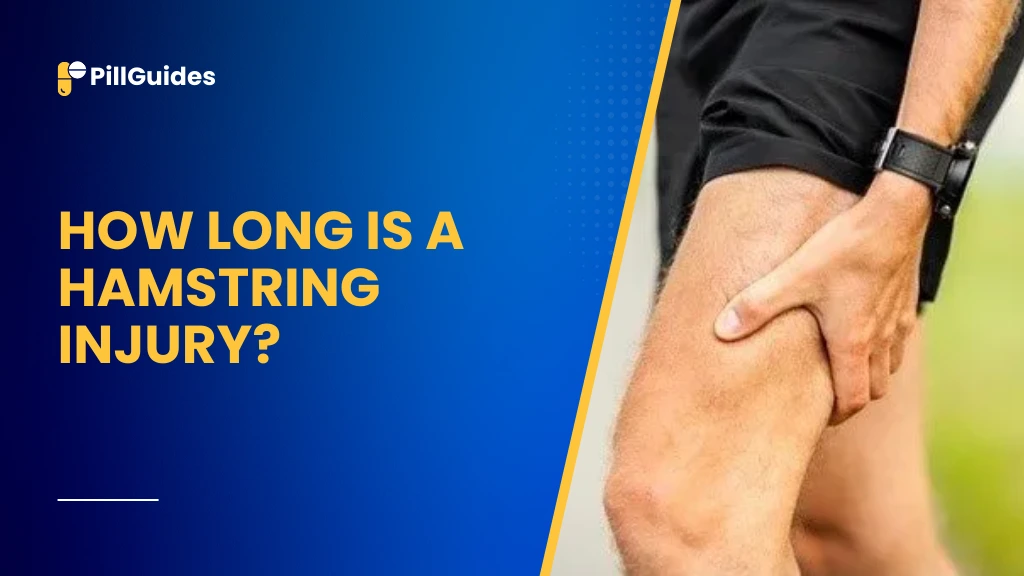Athletes and the active population are prone to developing hamstring injuries, often causing discomfort and sometimes long recovery times. If you can cope with a mild strain or a considerable tear, knowing the factors involved in the recovery processes must go hand in hand with managing your expectations and planning your rehabilitation.
This comprehensive guide will uncover the causes, recovery timelines, treatments, and preventions for hamstring injuries. Ever wonder How long is a hamstring injury? This article will answer that question for you.
What is a Hamstring Injury?
A group of three muscles in the back of the thigh, the hamstrings bend the knee and extend the hip. A hamstring injury occurs due to overstretched or torn muscles.
Types of Hamstring Injuries:
- Grade 1 (Mild Strain): Some discomfort, but no loss of strength, with minimal damage.
- Grade 2 (Moderate Tear): Pain and function limitation secondary to partial tearing of muscle fibers.
- Grade 3 (Severe Tear): If it is complete, there will be a complete rupture of the muscle, often accompanied by severe pain and swelling which will need to be treated surgically.
How Long is a Hamstring Injury Recovery?
The time taken to recover depends on how serious the injury is, the patient’s age, and when treatment begins.
Grade 1 Injuries:
If you rest well and correctly it will take about 1 to 3 weeks for the recovery to happen.
Grade 2 Injuries:
It may take 4 to 8 weeks to recover that strength and flexibility, often with physical therapy.
Grade 3 Injuries:
It can take 3 to 6 months, or more, for severe injuries to heal. It may require surgery and a modified rehabilitation program.
Factors That Influence Recovery:
- Immediate Treatment: The R.I.C.E. method (Rest, Ice, Compression, Elevation) can be applied quickly; this can dramatically reduce healing time.
- Severity: Of course, more severe injuries naturally tend to take longer to cure.
- Individual Health: Generally, younger and fitter people heal faster than older adults or people who predate disease.
Common Causes of Hamstring Injuries
Usually, a combination of factors leads to a hamstring injury. This knowledge can help you steer clear of these causes in the future.
- Sudden Movements: Acceleration, whether it’s a sprint or a jump, can put a strain on your hamstrings.
- Poor Conditioning: If your hamstring muscles are weak or undeveloped, they’re more prone to injury.
- Inadequate Warm-Up: The risk goes up if you don’t properly stretch and warm up before working out.
- Overuse: Lack of muscle endurance causes repeated stress from running, cycling, or other activities which can lead to muscle fatigue and eventually to injury.
- Muscle Imbalances: If the quadriceps are stronger than the hamstrings, this puts added stress on the back of the thigh.
Signs and Symptoms of Hamstring Injuries
Early identification of a hamstring injury can help you get treatment on time. Common symptoms include:
- Pain, that is sharp, and sudden, in the back of the thigh.
- Swell, bruise, often within hours.
- Lack of or inability to bear weight on the affected leg.
- The feeling of a popping sensation at the time of injury.
- Stretching or contracting the muscle, tenderness, or tightness.
Treatment Options for Hamstring Injuries
Most hamstring injuries heal without surgery — the good news. Care and structure to a recovery plan are both necessary.
Immediate Treatment:
- Within the first 48 hours reduce swelling and pain using the R.I.C.E. method.
- However over-the-counter pain relievers such as ibuprofen may help with discomfort.
Rehabilitation Exercises:
- Physical therapist-guided gentle stretching and strengthening exercises can return mobility.
- Increase intensity gradually and try not to re-injure yourself.
Physical Therapy:
- A customized program will address specific muscle balance issues and increase your flexibility.
Surgical Intervention:
- Grade 3 cases may need surgery to repair the muscle. It may take several months for rehabilitation.
Preventing Hamstring Injuries
It is better to prevent than to cure. Incorporating these strategies into your routine can minimize the risk of hamstring injuries:
- Warm-Up: Dynamic stretches and light cardio is always a good idea before you do any activity.
- Strength Training: So exercise would be something like hamstring curls, or deadlifts, in order to develop muscle strength.
- Flexibility Exercises: Muscle elasticity can be improved by doing yoga and static stretching.
- Avoid Overtraining: You need to allow your body enough time to recover between sessions.
- Correct Muscle Imbalances: Find a trainer or physical therapist you work with to highlight any weaknesses and work to solve them.
Hamstring Injury Recovery Timeline: What to Expect
While recovery times vary, here’s a general guideline:
- First 48 Hours: Take rest, ice, and elevate that injured leg.
- Week 1: If the pain subsides begin with gentle stretching.
- Weeks 2-3: Do light strengthening exercises under the supervision of the professionals.
- Weeks 4-8: Build back strength and flexibility while getting into higher levels of activity.
- 3+ Months (Severe Cases): Act in a structured rehabilitation program.
Conclusion
Hamstring injuries can be painful and distracting, but thanks to the right strategy, they are extremely manageable. The amount of recovery time depends on the severity of the injury, the quality of care provided to you, and your willingness to rehab. By learning the causes, symptoms, and treatments, you can arm yourself with the awareness to determine how you can return to a normal routine as soon as possible.
Remember, prevention is key. Running is serious and, by itself, will not maintain your hamstrings healthy and injury-free, a well-rounded fitness plan with strength training, flexibility exercises and adequate rest can go a long way here.
Disclaimer
This article is for informational purposes only and is not a substitute for professional medical advice. Always consult a healthcare provider for an accurate diagnosis and tailored treatment plan.
Read More: Osmosis Skin Care: A Complete Guide to Benefits, Routine
FAQs How Long is a Hamstring Injury
1. How can I check if that has a serious hamstring injury?
If you sustained a Grade 3 injury, you could experience severe pain, swelling, bruising, and an inability to move your leg.
2. Can I work out with a hamstring injury?
I find that during the initial recovery phase, it’s best to rest. If you want to resume any type of activity, it is best to consult a physical therapist.
3. Should I wait how long before I see a doctor?
If your pain lasts for a few days or more and you’re not able to function normally, visit a doctor right away.
4. Can hamstring injuries become chronic?
If not correctly treated, they can cause chronic pain, less mobility, or recurring injuries.
5. What are some home remedies for hamstring injuries?
This method is very effective. They also found that applying heat after 48 hours to the muscle and gently stretching it can speed up the recovery in subsequent workouts.










